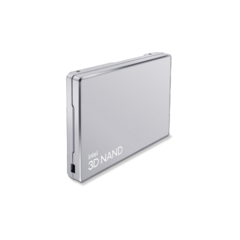Solidigm D5-P5430 7.68 TB NVMe GEN4 U.2 15mm 6800MBps/1730MBps - SBFPF2BU076T
Capacity: 7.68 TB BUS: NVMe GEN4 Format: U.2 15mm Speed: 6800 MBps (read) / 1730 MBps (write) Random Read (4K): 717000 IOPS Random Entry (4K): 100000 IOPS Lifetime: 0.57 DWPD Technology: QLC 3D NAND
Interested in purchasing more units? Request an individual B2B offer for these products.
| Product code | 225.167749 |
|---|---|
| Part number | SBFPF2BU076T |
| Alternative Part No. | HDS-IUN0-068 |
| Supermicro Part No. | HDS-IUN0-SBFPF2BU076T |
| Manufacturer | Solidigm |
| Availability | Not in stock |
| Warranty | 60 months |
| Weight | 0.35 kg |
| The price includes all legal fees | |
Detailed information
SSD
SSDs using SATA, SAS or NVMe interfaces are ideal for applications where the balance between read/write speed and affordability is important. They can be used, for example, as system disks, in database servers or IOPS-heavy hot-storage. In addition to its unrivalled speed, it offers, at a higher price, very low failure rates and higher reliability and resistance to vibration and temperature fluctuations. These drives are generally available in 2.5" format and they are therefore compatible with hot-swap slots designed for HDDs.
Solidigm
D5-P5430
NVMe
NVM (non-volatile memory) Express is a newer interface designed to take maximum advantage of flash memory and to minimize the so-called “bottleneck”. It can take advantage of the super low latency and high data throughput when connected via the PCIe interface. This allows the theoretical throughput of up to 32 GB/s depending on the number of lanes and the PCI-express generation. They are available in a variety of formats, from the compact M.2 and 2.5" U.2, to the add-on card for PCIe.
Speed
For SSDs, speed is most commonly divided into sequential speed, which is given in MB/s, and random speed, which is given in IOPS. SSDs are many times faster than traditional hard drives and are rapidly approaching in price in recent years. They also have a much lower access time and they do not wear out the disk during the reading process as is the case with traditional rotating disks.
6800/1730 MBps
717000/100000 IOPS
Capacity
The capacity of a disk often determines its usage. High-capacity HDDs are used for storing and backing up large amounts of data. High-capacity SSDs are useful, for example, when multiple users are simultaneously working with large amounts of data in real time. On the other hand, SSDs with a small storage space are mainly used for the operating system and its fast running, or as a boot drive or hypervisor.
Lifespan
To determine the lifespan of the drive, TBW(TeraBytes Written) and PBW(PetaBytes Written) parameters are often given to indicate the total data written to the SSD before failure. The second most common designation is DWPD (Drive Writes per Day) indicating how many times per day the user can overwrite the entire capacity of the SSD for the duration of the warranty.
7989.12
0.57
2.5“
This format is most often found in SSDs, but also in desktop, most often laptop hard drives and also specialized fast SAS drives. It stands out with its lower consumption and better heat dissipation compared to 3.5" disks. The most common use is found in 1U and 2U servers, all-flash disk arrays.
Parameters
| Interface | NVMe |
|---|---|
| HDD type | U.2 |
| Capacity in GB | 7680 |
| Read speed | 6800 MB/s |
| Write speed | 1730 MB/s |
| DWPD | 0.57 |














